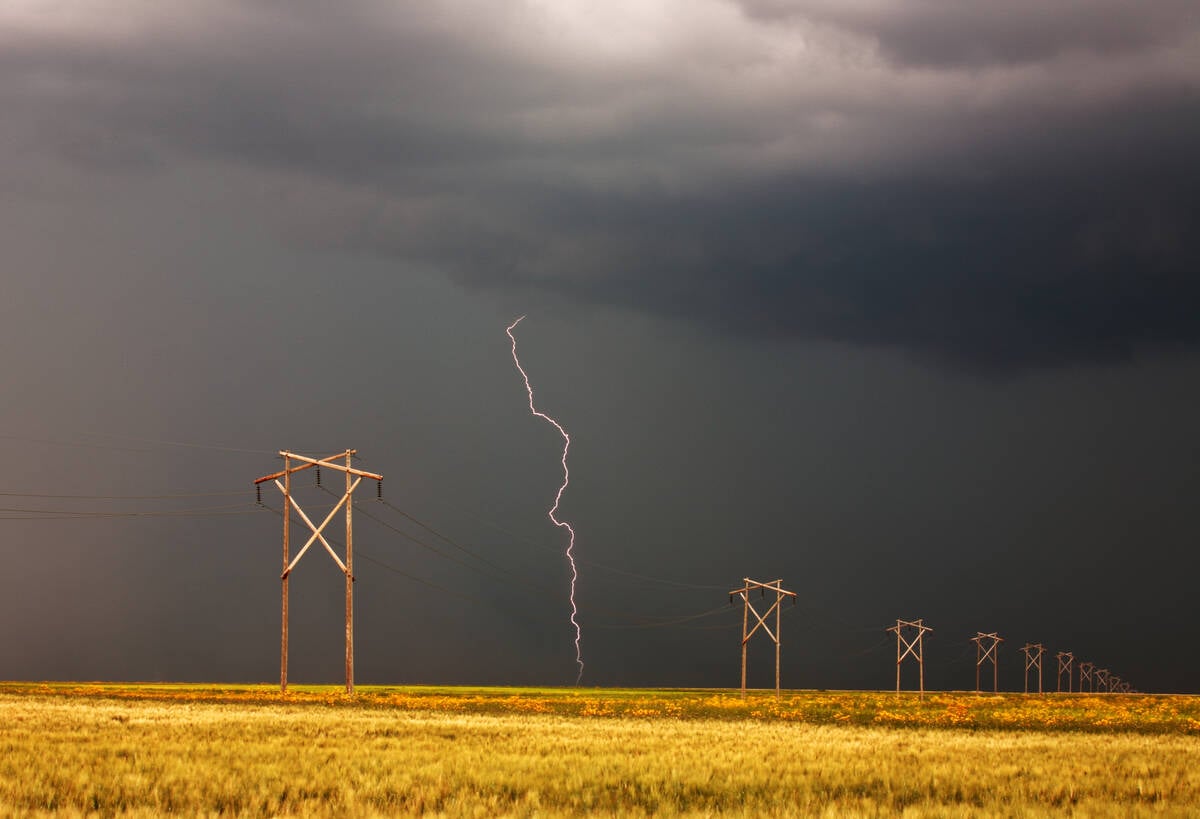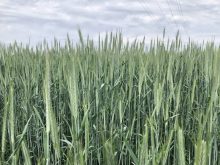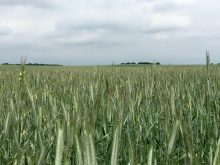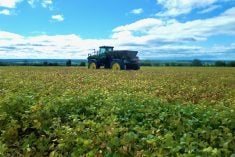I’ve heard it called a poor man’s crop, a niche market, prehistoric and a weed. Fall rye brings out strong feelings in some farmers and is completely off the radar of others. With unseeded and now flooded acres across the Prairies, there might be a fit for fall rye in some crop rotations.
Penny-pinching crop
At one time Prairie farmers seeded a million acres of rye per year. In 2013 that number was down to 270,000 acres (Statistics Canada). Much of that is on less productive, sandy ground as rye thrives in places other crops don’t. It germinates easily in the fall, even with minimal moisture and my dad says in his experience it is more winter hardy than winter wheat. Jamie Larsen, rye breeder at AAFC in Lethbridge agrees.
Read Also

Lightning gives and takes in Prairie fields
Lightning in fields can be a source of nitrogen but at times can result in crop damage which, at a glance, resembles a very localized disease outbreak, plant pathologist Ieuan Evans writes.
“Rye has excellent winter hardiness — considerably better than winter wheat. It’s grown in the Medicine Hat area where they have less snow cover and it can get pretty cold, so if rye can grow there it can grow anywhere.”
Larsen also pointed out that rye seems to be a more efficient user of fertilizer. It’s difficult to compare apples to apples, but on our farm rye has often yielded as much or better than spring wheat and we certainly weren’t over-fertilizing as we were trying to keep a taller variety standing. Rye is not susceptible to leaf or stem rust, Larsen said, so when budgeting producers can remove the fungicide pass from the equation.
Finally, rye can save money in the short- and long-term on the cost incurred by herbicides and weeds. Rye is allelopathic which means it emits toxins that inhibit the growth of other plants. By the miracle that is nature, allelopathy is only expressed by the rye seedling at germination and the residue for a few weeks after harvest, providing weed control when it’s most needed. In between these two points on the on the crop cycle, rye vigorously out-competes most weeds. We haven’t used herbicide on our rye and we’re planning to grow it next year on a field with some herbicide resistant wild oats to reduce the seed bank and hopefully put money in our pockets in future years.
- More Grainews: Hybrid rye to be tested in Manitoba
Larsen said growers should not fear allelopathy.
“People get concerned about allelopathy,” said Larsen, but because the toxins breakdown a few weeks after harvest, next year’s spring crops are safe. He pointed out that in Eastern Canada farmers use rye as a cover crop, then roll or silage it and plant soy or corn immediately after.
“Those are high value crops and if they’re not seeing any affect then I think it’s something you should not be as concerned about.” An interesting aside: the allelopathic compounds in rye are the same as those used in some cancer-fighting medicine.
“If you could bump up those properties then maybe there could be some pharmaceutical applications for rye which would increase the value,” said Larsen.
Niche-ly done
Our experience with growing rye began in earnest after the 2002 drought. With harvest done early my neighbour, a fellow seed grower, decided to plant some pedigreed rye. The next year, when the seed guide came out, the South Korean government contacted him looking for someone to provide several thousand tonnes of rye seed annually. They wanted to plant it in the fall, between their rice growing seasons to reduce erosion, provide weed control and serve as green manure (it was tilled under before planting rice). Every seed grower dreams of a customer who doesn’t own a combine, and since this rye would never be taken to grain production, my neighbour decided to pursue the opportunity, recruiting my dad and another farm to work alongside him.
It took five years to negotiate an agreement with the Korean buyers and we’ve exported clean, bagged, treated rye for several years. We’ve heard the green manure program may be ending in Korea, but as I’ve spent time in the rye business, I’ve learned there are other unique marketing opportunities.
I spoke to a grower who exports rye to Japan for flaking (think oats) and we’ve exported food grade rye to Korea for puffing (my mom asked if they had heard of puffed rice). This year, I am exporting a small amount of rye into the U.S. for cover crops. According to USDA estimates, about three million acres of cover crops are planted in the U.S., which is only one per cent of the farm land, but the goal of the National Conference on Cover Crops and Soil Health is to increase that ten-fold by 2020. Rye by itself or in blends is a popular option in the cover cropping market thanks to its quick growth in fall and spring, its large biomass and root system, and weed suppressing abilities.
Domestically, rye typically trades below spring and winter wheat price, but because there is so little grown, a patient producer can take advantage of price spikes. This winter I know Alberta Distillers was buying rye for around $7.90 per bushel laid into Calgary. We sold some rye commercially this spring for $5.75 to 6.25 per bushel at the bin in central Alberta. Compare that to what a lot of wheat traded for this winter and spring and that price doesn’t look so bad.
Like any crop, good harvest samples help farmers get the most for their product. Falling numbers, germination and of course ergot specifications vary by end user, so be prepared to do some testing and/or provide a representative samples.
Because there is no futures market for rye, it can be hard to figure out a value for the crop, but from my experience, once you’re in the game, you seem to catch wind of opportunities as they come along. Canada Malting recently entered the rye malting market with a contract for a whisky producer. They purchased old crop this spring and are looking to contract some new crop production in fall 2014 and as well as acres for 2015 harvest.
Coming next issue
I have spent a lot of time thinking and talking about growing and selling rye over the last two years, so not surprisingly I have a lot more to write than would reasonably fit in one column. Next issue I’ll talk about why rye is a “prehistoric” crop, how it differs from other cereals and some of the unique research being applied to it. I’ll also talk about the challenges of growing rye.
In the meantime, I’ll leave you with a final word of advice: get the drill ready and your seed lined up now! Whether you’re seeding into fallow ground or this year’s stubble, it seems the biggest hurdle to getting winter crops seeded is having the right mindset. Once harvest starts, getting the drill in the field seems like the least of a farmer’s concerns. So have your equipment ready and when that first little shower comes that sets you back for a day or two on the combine, get planting.
















